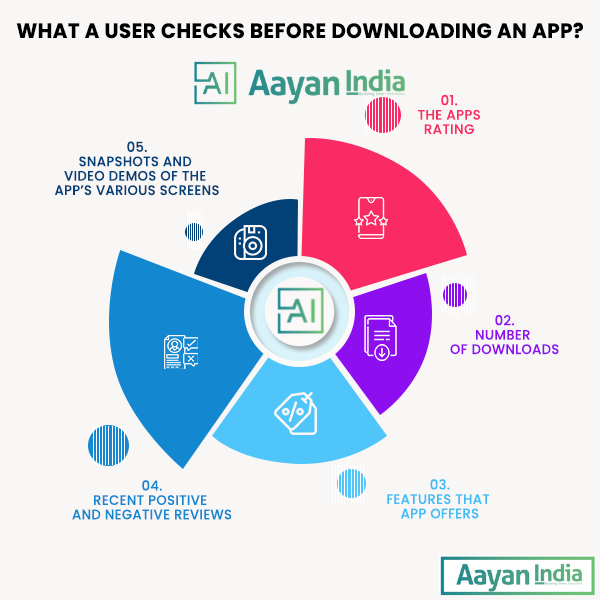User experience is the single most important aspect of an app that decides its success or failure and determines what trajectory the app is going to follow in the future. It is very likely that your app shows excellent results with a certain design but it is going to wear off and the audience will be looking for a fresh look that follows the current design trends. You cannot just pull an all-nighter at the office to produce the next update for your app, it is always better to be ahead of the time so when the time comes, you do not have to go through a lot of hassles.
But how do you decide whether or not your app needs a reboot? Here are some indicators that will help you know if you need a revamp or not.
Changing app marketplace requirements
Turns out both Google and Apple are concerned about the technology their users are getting and the state of that technology. Both of the major two app marketplaces require developers to publish regular updates so that the app remains compatible with the latest technology in the market and the users get a utilitarian yet enjoyable experience. You simply cannot be like ‘the app has been launched and my job here is done.
Look out for changing Google Play Store and Apple App Store requirements so you do not miss out on your chances of being the best. However, an important thing here is it is quite likely that the store requirements are ‘minimum requirements and these may not truly represent the latest trends in the market so watch out for these ditches and do yourself a favor, update your app regularly. Or else you might get ex-communicado from the store for living in the retro world.
Listen to your users, especially the annoyed ones
User feedback is one thing that can always steer you in the right direction whenever you feel lost or are unable to determine what is wrong with your app. There are tons of users that want your app to work and take the time to share their feedback about the ticks and crosses. As a developer, it is vital that you are reading feedbacks timely and ensure that they are being resolved.
There may be other reviews that are just stars and nothing much written. For such reviews, anything less than 4 stars means there is something seriously wrong. Either the design does not appeal much to the user or the app does not work the way it is intended to.
App Store and Play Store ratings are a good starting point but they will not provide conclusive information about what needs to be done. Observe other metrics as well apart from user reviews to end up with a much-informed decision.
Keep a keen eye on iOS and Android updates
The operating system market is dominated by these two tech mammoths; iOS and Android. As a developer, one needs to keep pace with these operating systems and the features they are offering for your app to stand out in the crowd of millions of apps on app stores.
Every year both Apple and Google hold an international conference about the most recent updates and changes they have made to their operating systems. Instantly, there is a buzz on the market both on the consumer side as well as among the developers about how the new changes will be implemented in the new apps and enhance consumer usage.
At this stage, every app needs to incorporate the new gestures, features, and layouts and take advantage of the improved interface. There are hardly any developers that ignore these OS updates. However, if you are one and your app has not been updated to the latest OS, your app is in deep waters and needs immediate attention.
Frequent App Crashes and Bugs
‘My computer/smartphone got hanged’ is not something that mankind is accustomed to anymore. We have developed excellent processors that execute commands in a matter of microseconds and we have grown used to such snappy clicks and touches.
In today’s world, an app crash is a very unfortunate incident with such powerful devices and if your app has reports of crashes, you instantly need to work to reboot its core. When implementing new features and publishing updates, despite the extensive pre-publish audits, there is a chance that something might be missed out and result in the app crashing. It creates a disastrous impact on the user experience and they are most likely to resort to uninstalling the app and leaving a 1-star review.
Be mindful of such incidents and try to keep your app in the best of its spirits via regular updates. In case the problems still continue to occur, get ready to embrace an extensive reboot. It is inevitable now!
Support for Biometric Authentication
Fingerprint sensors and face-recognition tech are a regular part of every smartphone manufactured today and since it is such a common feature, apps are also expected to acknowledge such hardware and build features that make use of it.
Consider WhatsApp as an example, it is only one among the numerous social media and messaging apps that allow having a fingerprint unlock. We all have some sort of security over our social media and messaging apps, still, only WhatsApp makes use of biometric verification and allows security and hassle-free login.
Not every app needs a biometric authentication but if yours is a social media app or a fintech, you should probably look into it.
Your app has limited Active Users
An app’s real utility derives from the scale at which it is being used by consumers to solve their problems. A precise alternative as compared to the number of installs is the active user count. These are the people that log into your app frequently, spend a while using the app, get their tasks done, and then close the app. These are the people deriving value from your product and they serve as the scale of your app’s success.
Active users are always going to be a lot less than the number of installs. Some might install your app and keep it for an hour of need, others might need it on a day-to-day basis while some might forget it even exists on their phone. Your app should have the capability to not only serve the active users well, but it should also actively try to engage inactive users via notifications and messages to reconnect with the app.
Despite all your efforts if you still are unable to manage a decent active user total out of your net downloads, your app needs to be more interesting and appealing to the consumer and this is exactly when you need a reboot for your features and UX design.
Experiencing decreasing Weekly Downloads
The number of downloads per day or week or month is a healthy metric to identify if people are interested in your app or not.
Let’s take an example of a fitness app, there are hundreds of health and fitness app on the Google Play Store as well as App Store. Among these thousands lies your app as well. Now if I need a fitness app for myself, I’d probably go to the App Store, search “fitness app”, browse through the top 5 apps and decide in favor of what seems to offer a clean interface with features useful for me. This precisely is the decision-making process for an average smartphone user.
A good user will probably look into the following aspects of an app on the marketplace before downloading it:
i.) The app’s rating
ii.) Number of downloads
iii.) Features that the app offers
iv.) Snapshots and video demos of the app’s various screens
v.) Recent positive and negative reviews

If your previously successful app is experiencing a downturn, you have probably messed up in either of the above places.
a.) Ratings and reviews go hand-in-hand with each other. The majority of the time, reviews are a descriptive representation of the ratings and indicate the reason behind any good or bad review.
b.) Features in your app should be consistent with what other developers are offering in the market. For example, if I am looking for a vacation planner, I will probably choose the one which can plan a complete trip including flights and Ubers, rather than one that only has hotels and a guide about locations to visit in that city.
c.) Screenshots and video demonstrations play a very important role in a user’s decision-making about whether he wants to install an app or not. The app should have an inviting interface that has the potential to showcase a number of features on the same screen. A user is automatically attracted to such apps and you book a download for yourself.
Now in order to solve the deteriorating number of downloads problems, you need to consider all of these aspects and come up with a solution i.e.: the reboot to get your app back on track.
The Screen flow is a Fuss
Navigating within the app should be buttery smooth and the user should not have to go through the toils of going back and forth in the app to get from one place to another (like how you struggled with the gear lever of a 1968 Ford).
For a moment, let’s open the Facebook app for a while. In the past 5 years, Facebook has worked a lot to develop itself as the video viewing platform and introduced the Facebook Watch tab. It features video content only and has improved Facebook session spans by miles. At the moment, the feature has been implemented in such a seamless fashion that you are simply scrolling through your newsfeed and you stop for a moment to watch a video that interests you. Within a minute or two of watching the video, it shifts into the Watch tab and you end up watching back-to-back videos and spending even hours without even noticing that you are in the Facebook Watch.
This is the type of implementation that you need to improve your user’s session duration and if you are doing it just fine currently or worse your app is like shifting gears in a 1968 Ford, you better be worried about your app’s future.
In the nutshell…
As an app development company, you need to watch out for all major and minor indicators that will keep you abreast with the latest trends. It is also important that you keep a keen eye on your metrics and keep improving your app by adding new features and regular bug fixes. Additionally, you will also need to introduce a design update from time to time as well so your users always have something to talk about and do not get bored.







